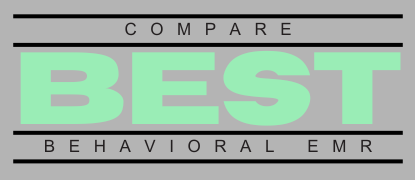Advancements in technology have greatly transformed how behavioral health professionals manage their practices. Among the most impactful innovations is the Behavioral Health Electronic Medical Records (EMR) system. However, many clinicians and practice owners are still grappling with the question: how can a behavioral health EMR system truly improve the efficiency of my practice? Let’s dive in and explore.
Understanding the Power of a Behavioral Health EMR
At its core, a behavioral health EMR is a software tool designed to digitize and streamline the record-keeping processes in a behavioral health practice. It encompasses a broad range of functionalities, from patient intake, scheduling, and billing, to clinical documentation and reporting.
Key Benefits of Using a Behavioral Health EMR
- Improved Efficiency: Automating administrative tasks like scheduling, billing, and record-keeping frees up time, allowing clinicians to focus more on patient care.
- Enhanced Patient Care: With all patient data securely stored and easily accessible, clinicians can make more informed decisions, leading to improved patient outcomes.
- Increased Revenue: By streamlining the billing process and reducing billing errors, practices can increase their revenue and reduce the time between service delivery and payment.
- Regulatory Compliance: EMR systems are designed to comply with privacy regulations like HIPAA, protecting your practice from potential legal issues.
Integrating Behavioral Health EMR into Your Practice
Integrating a behavioral health EMR into your practice may seem daunting, but with careful planning and the right strategies, it can be a smooth transition. Here are some steps to guide you:
1. Define Your Needs
Before selecting an EMR system, you need to understand your practice’s specific needs. Do you need advanced scheduling features? Are you looking for robust billing capabilities? Make a list of your needs and use it as a guide when evaluating potential systems.
2. Research and Compare EMR Solutions
There are many behavioral health EMR solutions on the market, each with its own set of features and benefits. Take time to research and compare different solutions. A free practice analysis can be an excellent starting point.
3. Training and Implementation
Once you’ve selected an EMR, it’s crucial to train your staff on how to use it effectively. This may involve training sessions, tutorials, or hands-on practice. Implementation should be gradual, allowing your team to adjust to the new system.
Optimizing Your Behavioral Health EMR
Implementing a behavioral health EMR is just the first step. To truly maximize its potential, you need to optimize your system. Here are a few strategies:
1. Customize Templates
Most EMR systems come with customizable templates for clinical documentation. Tailoring these templates to match your workflow can significantly enhance efficiency.
2. Leverage Data Analytics
EMR systems can generate valuable data analytics. Use this data to identify trends, track performance, and make informed decisions about your practice.
3. Regularly Update Your System
EMR vendors regularly release updates to improve functionality and security. Ensure your system is always up-to-date to benefit from these enhancements.
Conclusion
Integrating a behavioral health EMR into your practice can significantly improve efficiency, enhance patient care, and increase revenue. However, it requires careful planning, training, and continuous optimization. Don’t hesitate to seek expert advice or use resources like a free practice analysis to help you make the right decisions.
Meta description: Discover how a Behavioral Health EMR can enhance your practice’s efficiency, improve patient care, and increase revenue. Learn how to integrate and optimize an EMR system in your practice.
